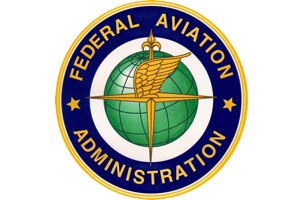Aspiring commercial UAV operators got an early present this past weekend when the FAA released their proposed rules for the commercial use of small UAVs. The document, titled “Small UAS Notice of Proposed Rulemaking,” marks a step toward the FAA’s long-awaited final rule announcement.
“We have tried to be flexible in writing these rules,” FAA Administrator Michael Huerta said in a statement. “We want to maintain today’s outstanding level of aviation safety without placing an undue regulatory burden on an emerging industry.”
According to a story in Forbes, the FAA’s hand was forced when a visitor to the agency’s website over the weekend discovered a document that had been uploaded inadvertantly. The magazine reports that Steve Zeets, a professional surveyor, was on the website checking whether the FAA had responded to his exemption request when he found the economic analysis of the regulations for small drones. The document was not an actual proposal of rules, but instead an economic analysis of the FAA’s proposed rule. Zeets downloaded the document and posted it as a Google doc. The FAA took the document down soon after Zeets accessed it.
On Sunday, the FAA announced to the press “a framework of regulations that would allow routine use of certain small unmanned aircraft systems (UAS) in today’s aviation system, while maintaining flexibility to accommodate future technological innovations.” The proposed rules apply to UAVs under 55 pounds conducting “non-recreational” operations. The response from observers and interested companies has been almost unanimously positive so far.
A summary of the proposed rules is available from the FAA here, but these are the important things to know following this announcement:
No pilot license necessary
Under the proposed rules, the FAA would class a person using a UAV as an “operator,” not a pilot. In lieu of a pilot license, which many feared the FAA would require for UAV flight, an operator is required to pass an aeronautical knowledge test and obtain an FAA UAS operator certificate. The certificate requires renewal every 24 months, may cost as little as $300, and can be pursued by operators as young as 17 years old.
As PrecisionHawk CEO Christopher Dean noted in an email to customers, this rule grants “companies the ability to use entry level employees or interns to perform flights, owing to economic advantages.”
Single-category rules
The proposed rules apply to all UAVs under 55 pounds, regardless of design. Individual UAVs will not need to receive a certificate of airworthiness before use, opening the door for UAV development.
The FAA has made no mention of whether they intend to follow a risk-based approach for larger UAVs.
Line-of-sight restriction
The proposal states that “at all times the small unmanned aircraft must remain close enough to the operator for the operator to be capable of seeing the aircraft with vision unaided by any device other than corrective lenses.” In the economic analysis of these rules leaked over the weekend, the FAA argued that sense-and-avoid technology had not adequately progressed for use on small UAVs.
This particular rule is likely to receive pushback from those in the UAV industry, especially given the recent announcement of a number of different sense-and-avoid systems around the Consumer Electronics Show at the beginning of the year. However, there is reason to believe that this regulation will not change, given the FAA’s ruling that first-person view cameras cannot satisfy the sense-and-avoid requirement either.
The rules are flexible
Many observers have commented on the unexpected flexibility of the proposed rules, which mitigate risk while still accommodating a majority of commercial UAV operations.
A UAV must be operated between sunrise and sunset, with a maximum airspeed of 100mph and a maximum altitude of 500ft. A UAV cannot be flown over people not directly involved in the operation. No person may act as operator for more than one UAV at a time.
The rules are not yet final
The proposed rules will allow widespread use of UAS for commercial purposes without an exemption. However, since the rules are not yet in place, the exemption process still stands. As the FAA noted carefully in the press release, “The current unmanned aircraft rules remain in place until the FAA implements a final new rule.”
Some potential UAV operators, including the surveyor interviewed by Forbes, hope that the current exemptions will be approved with similar limitations to those proposed by the FAA. However, the FAA has made no comment on the current exemption process.
The FAA is asking for public comment
A number of steps remain before the final rules are announced and brought into effect. The FAA is seeking public comment on the proposed regulation for 60 days from the date of publication. See www.regulations.gov for more information.
SPAR will continue to report on this story as it develops.
Commercial UAV Expo, a new trade show and conference organized by SPAR 3D, will take place October 5-7, 2015 in Las Vegas. It focuses on the commercial UAV/UAS market in North America covering including Surveying & Mapping; Civil Engineering & Infrastructure; Mining; Construction; Process, Power & Utilities; Precision Agriculture; and Law Enforcement, Security, Emergency Response.






